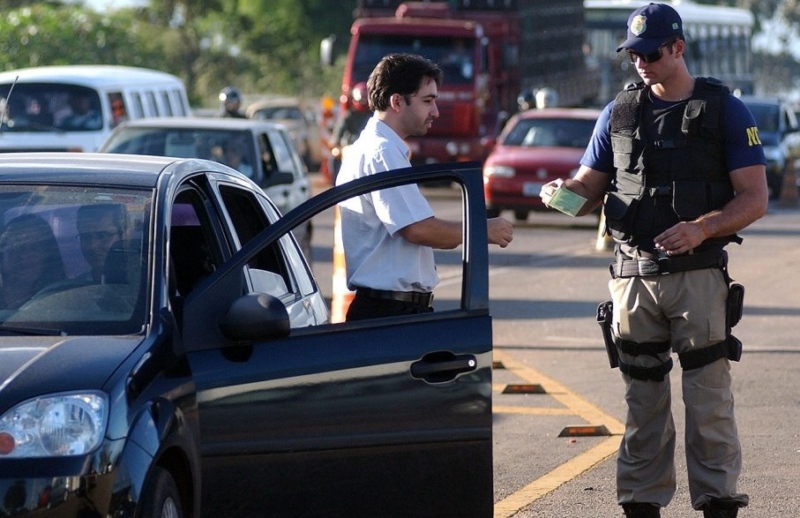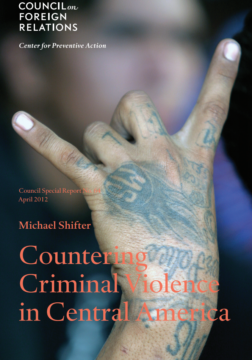A Conversation with Alonso Salazar
Medellín is Colombia’s second largest and fastest growing city, but also the most dangerous major city in the country.
With roughly 50,000 murders a year for the past decade, Brazil is one of the world’s most violent countries. The prevalence of violence, however, has not been homogenous nor static within Brazil. While the homicide rates have skyrocketed in the North, South and Central-West, crime in the Southeast of the country has decreased, especially in São Paulo and Rio de Janeiro. Recently, however, even in cities where the state had managed to control organized crime, violence is on the rise. To discuss the successes and challenges of Brazilian crime reduction and understand what factors are contributing to this reversal of trends, The Dialogue welcomed Desmond Arias, Associate Professor of Public Policy at George Mason University and Benjamin Lessing, Assistant Professor of Political Science at the University of Chicago. Frank Mora, Director of Florida International University’s Latin American and Caribbean Center, moderated the exchange.
In Brazil, the decrease in crime from 2000-2010 has been attributed to a paradigm shift among public security intellectuals who instead of pushing for a “war on crime” have promoted a strategy of “homicide control.” Arias explained that crime prevention now involves community-oriented policing, citizen participation, and data-driven interventions. In Belo Horizonte, the new homicide control program called Fica Vivo reduced violence by 50%. Arias also accounted for the success of Pacto Pela Vida, the new policing initiative in Recife: the program which uses georeference crime data modeled off of CompStat, a New York City Police Department's management tool, has helped Recife’s police better allocate resources, enhance staff accountability and dismantle many of the city’s violent networks. Lessing also discussed how Rio’s “Pacification Program” for which Pacifying Police Units (UPPs) physically occupy favelas, has effectively decreased homicide rates. Over the last six years, pacification has allowed the state to retake approximately 200 favelas from gangs and drug dealers.
Despite these positive outcomes, many challenges lie ahead for Brazilian law enforcement. The breakdown of order in Rio’s slums after the World Cup and scandals of police brutality including extrajudicial killings, mainly of Non-Whites, have tainted enthusiasm for UPPs. While the police’s yearly killings in Rio had decreased from 1,134 to 412 from 2008 to 2013, they have already escalated to 614 killings in August 2014. In Rio and São Paulo combined, “police kill around 1,000 civilians a year, putting Rio in the same category as a civil war in terms of lethality,” explained Lessing. Explicitly pessimistic, he noted that “policing remains largely an authoritarian readout.”
But what explains this increase in violence? Lessing argued that Brazilian cartel leaders are now engaging in violent lobbying: around elections, when their political leverage is higher, leaders orchestrate terror attacks aimed at changing carceral policy. While there is still much ambiguity over the causes of the recent spikes in violence, pacification’s lack of a social program follow-through, namely the absence of youth leadership trainings and job opportunities, has worsened the violence-stirring neglect favela inhabitants often face. For Lessing, pacification’s initial success and UPPs’ consequent upscaling across Brazil has also created its own set of problems including insufficient policing manpower and physical infrastructure crucial to successfully enforcing the program.
In light of these challenges, both panelists discussed some reforms that should be undertaken to improve Brazilian public security. While Lessing did make it clear that there was no simple formula for success, he did stress that policing should rely on intelligence to ensure that state force is more efficiently employed. Building off the Mara Truce in El Salvador and the Primeiro Comando do Capital (PCC)’s peaceful control of the retail drug trade, Lessing favored police using intelligence to selectively target the most violent gangs and pressure them into acting more peacefully instead of resorting to mass incarceration which, he notes, has not prevented imprisoned gang members from projecting their power onto the streets. Arias called for investment in data gathering and monitoring systems in addition to more comprehensive criminal justice reform.
Considering the fluctuations of public security in Brazil, it was ultimately clear from the exchange that only a crime prevention framework that can support flexible policies that adapt over time to local circumstances and occurrences will prove successful in ensuring Brazilians’ safety and paving a path towards prosperity.
Medellín is Colombia’s second largest and fastest growing city, but also the most dangerous major city in the country.
Violent crime in Central America, particularly in the “northern triangle,” is reaching breathtaking levels.
Public security is today the issue that most troubles the citizens of nearly every country of Latin America and the Caribbean.
 Agência Brasil / CC BY 3.0 br
Agência Brasil / CC BY 3.0 br

